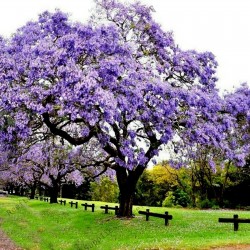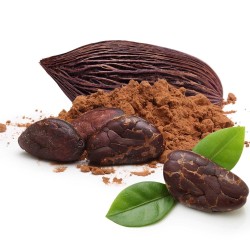

500 Seeds Paulownia Tomentosa
Pret
9,00 €
SKU: T 14 T
Seeds Gallery Com,
5/
5
<!DOCTYPE html>
<html>
<head>
<meta http-equiv="Content-Type" content="text/html; charset=UTF-8" />
</head>
<body>
<h2><strong>500 Seeds Paulownia Tomentosa (Empress, Foxglove Tree)</strong></h2>
<h2><span style="color: #ff0000;"><strong>Price for Package of 500 seeds.</strong></span></h2>
<div>
<div>Paulownia tormentosa is known by many names; regardless of what you want to call it, there is no doubt about its impressive ornamental features. This beautiful tree puts on an awe inspiring show in spring. Its soft chamois velvet buds open into large violet to blue, trumpet-like blossoms which fill the air with a sweet fragrance. The flowers carried on long up curved shoots, look like large foxgloves.</div>
<div>The huge leaves are an architectural delight: the soft, downy, large leaves appear after the flowers have opened.</div>
<div>Native to eastern Asia, this exotic looking, deciduous tree is surprisingly hardy and can tolerate harsh winters, to - 8*C (-14*F). Hardy throughout the British Isles, the buds of the Foxglove-like flowers are formed in the autumn and can be damaged by late frosts. They must be sheltered from hard frosts to ensure the violet blooms appear in spring.</div>
<div>It is a fast growing tree, usually grown as a specimen or shade tree. Growing rapidly (to 6f)t in it first year. In 3-5 years, this tree achieves what many other tree species take generations to achieve. An excellent use of this plant is the production of "stooled" specimens giving perhaps the most magnificent of all foliage dot plants. All growth is cut down to ground level each March and the resultant suckers reduced to a single shoot. The result is a strong, erect growth rising to 10 ft. and bearing huge and handsome leaves, producing a most striking effect. In very cold zones they are often grown and cut to near ground level in autumn and grown as a large-leafed shrub the following season.</div>
<div>Very easy to germinate, seedlings grow rapidly, flowering in as little as 2-3 years under good growing conditions.</div>
<div>It has been awarded the prestigious RHS Award of Garden Merit.</div>
<div>Named after the Princess of the Dutch region, Anna Paulowna, who died in 1865. It has never been found in the wild although it undoubtedly originated in China where an old custom is to plant an Empress Tree when a baby girl is born. The fast-growing tree matures as she does. When she is eligible for marriage the tree is cut down and carved into wooden articles for her dowry. Carving the wood of Paulownia is an art form in Japan and China.</div>
<div>Sowing: </div>
<div>Sow September to May</div>
<div>The seeds are very small so sow as thinly as possible to avoid crowding which leave seedlings more susceptible to damping off. Place the seeds on the surface of a tray containing well drained compost. Do not cover the seeds as light is required for germination.</div>
<div>Stand the tray in water to soak and either cover with a plastic dome or place the tray into a plastic bag. Temperatures should ideally not exceed 30*C (85*F) during the daytime and not below 18*C (60*F) at night. Always keep the soil mixture moist (not soaked) during the germination process. The seeds will germinate in 30 – 60 days and grow rapidly when conditions are favourable.</div>
<div>Growing: </div>
<div>After germination, remove the cover or bag. When seedlings are big enough to handle (about 2-3 weeks), carefully transfer to pots. Grow on until they are strong enough to plant into their permanent positions. Harden off before planting out (after the last expected frosts).</div>
<div>Aftercare: </div>
<div>Pruning should be done in autumn after leaf drop. prune down to where an axillary bud can take over as the single leader. Coppicing a tree annually sacrifices the flowers but produces 3m (10ft) stems with enormous leaves up to 60cm (2ft) across.</div>
<div>Plant Uses: </div>
<div>A specimen tree, shade tree, or focal point.</div>
<span style="font-size: 11px; line-height: 1.5em;">Fully hardy to -25°C.</span></div>
<div>
<table cellspacing="0" cellpadding="0" border="1">
<tbody>
<tr>
<td colspan="2" width="100%" valign="top">
<p><span style="color: #008000;"><strong>Sowing Instructions</strong></span></p>
</td>
</tr>
<tr>
<td valign="top" nowrap="nowrap">
<p><span style="color: #008000;"><strong>Propagation:</strong></span></p>
</td>
<td valign="top">
<p><span style="color: #008000;">Seeds</span></p>
</td>
</tr>
<tr>
<td valign="top" nowrap="nowrap">
<p><span style="color: #008000;"><strong>Pretreat:</strong></span></p>
</td>
<td valign="top">
<p><span style="color: #008000;">0</span></p>
</td>
</tr>
<tr>
<td valign="top" nowrap="nowrap">
<p><span style="color: #008000;"><strong>Stratification:</strong></span></p>
</td>
<td valign="top">
<p><span style="color: #008000;">0</span></p>
</td>
</tr>
<tr>
<td valign="top" nowrap="nowrap">
<p><span style="color: #008000;"><strong>Sowing Time:</strong></span></p>
</td>
<td valign="top">
<p><span style="color: #008000;">all year round </span></p>
</td>
</tr>
<tr>
<td valign="top" nowrap="nowrap">
<p><span style="color: #008000;"><strong>Sowing Depth:</strong></span></p>
</td>
<td valign="top">
<p><span style="color: #008000;">Light germinator! Only sprinkle on the surface of the substrate + slightly press on</span></p>
</td>
</tr>
<tr>
<td valign="top" nowrap="nowrap">
<p><span style="color: #008000;"><strong>Sowing Mix:</strong></span></p>
</td>
<td valign="top">
<p><span style="color: #008000;">Coir or sowing mix + sand or perlite</span></p>
</td>
</tr>
<tr>
<td valign="top" nowrap="nowrap">
<p><span style="color: #008000;"><strong>Germination temperature:</strong></span></p>
</td>
<td valign="top">
<p><span style="color: #008000;">22-25°C</span></p>
</td>
</tr>
<tr>
<td valign="top" nowrap="nowrap">
<p><span style="color: #008000;"><strong>Location:</strong></span></p>
</td>
<td valign="top">
<p><span style="color: #008000;">bright + keep constantly moist not wet</span></p>
</td>
</tr>
<tr>
<td valign="top" nowrap="nowrap">
<p><span style="color: #008000;"><strong>Germination Time:</strong></span></p>
</td>
<td valign="top">
<p><span style="color: #008000;">4-6 weeks</span></p>
</td>
</tr>
<tr>
<td valign="top" nowrap="nowrap">
<p><span style="color: #008000;"><strong>Watering:</strong></span></p>
</td>
<td valign="top">
<p><span style="color: #008000;">Water regularly during the growing season</span></p>
</td>
</tr>
<tr>
<td valign="top" nowrap="nowrap">
<p><span style="color: #008000;"><strong> </strong></span></p>
</td>
<td valign="top">
<p><br /><span style="color: #008000;"><em>Copyright © 2012 Seeds Gallery - Saatgut Galerie - Galerija semena. </em><em>All Rights Reserved.</em><em></em></span></p>
</td>
</tr>
</tbody>
</table>
</div>
</body>
</html>
T 14 T





